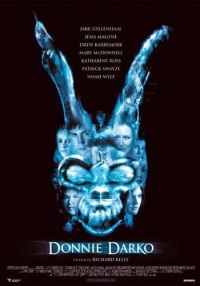Unlikely Hope
 So we’ve dealt with opening shots and isolated shots, and now the House Next Door asks a different but related question:
So we’ve dealt with opening shots and isolated shots, and now the House Next Door asks a different but related question:
“What single movie image or moment do you think of more often than any other?” My answer comes from my iPod.
 So we’ve dealt with opening shots and isolated shots, and now the House Next Door asks a different but related question:
So we’ve dealt with opening shots and isolated shots, and now the House Next Door asks a different but related question:
“What single movie image or moment do you think of more often than any other?” My answer comes from my iPod.
I anticipated finding Donnie Darko: The Director’s Cut a lesser film than its forebear; I thought writer/director Richard Kelly would use it mostly as an opportunity to try to explicate his impenetrable plot, and to impose his reading on a text that had been ambiguous to the point of beautiful inscrutability. And that’s exactly what he does. Here’s the funny thing: I liked this version nearly as much as the theatrical cut, but for very different reasons.
Although a description of Donnie Darko might make it sound like an amalgam of motifs from the mind of Terry Gilliam, the film integrates its strangeness so well into a larger narrative that it feels more realistic than most movies. It’s funny, frightening, and ultimately devastating, a human story told very, very well.